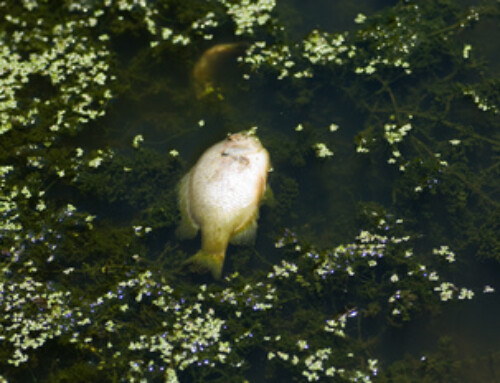By Mark Schram
It’s late May or early June, and at your local bait shop there is a story being told about a trophy musky being taken on a bobber and worm off some guy’s pier on your favorite lake. It happens every year. Musky spawning habits along with seasonal location are the key factors why this story continues to be told each year.
According to the Wisconsin DNR, optimum water temps for musky spawning is 55 degrees. Typically spawning locations are shallow bays in 1-3 feet of water, with a mucky or wood covered bottom. The fish do not attend to the eggs once released, and in about 10 days those eggs will hatch. Generally musky have finished spawning prior to Memorial day in the Wisconsin and Minnesota areas.
Spring musky seeks out shallow water which is warmer than surrounding water. Other species of fish have also concentrated into the shallow warm water to spawn, providing the musky with an abundant food supply. Depending on seasonal conditions the musky may be in the area spawning themselves. 2008 should have a late spawn, due to the late ice out and lack of warm weather in most northern areas of Wisconsin and Minnesota.
Once the spawn is completed, musky stay in the shallow areas feeding on crappies, bluegills, ciscos, and other fish. They may also seek out deep water areas adjacent to the shallow areas, typically within several hundred yards. Weed covered flats near moving water is also a key area to try. Four to seven foot depths are ideal target points. As the spring winds push the warmer top water across the lake, look to the windblown bays for warmest water on the lake first.
Bait selection is critical at this junction of the season. Small baits in the 3-5 inch range are ideal. Use silver blades on bright days and gold/florescent blades on overcast days. Spoons, buck tails or swim baits are excellent choices during this time of the season.
Weather changes are constant with Spring. Watching the weather forecast, understanding the current conditions, and preparing for forecasted changes, can give you insight of what to expect on the water each day.
Finally, the last key feature is to fish slow, but high in the water column. Musky almost always feed up. Their eyes are positioned into their head so they are almost always looking up. Fishing too deep will be counterproductive. Fishing too fast can also be a detrimental to success. Appropriate speed of retrieval should be just fast enough to ensure the blades are moving on the lure.
Just remember “S” stands for Spring. Slow, Shallow, and Small are your keys to Spring Musky success.





